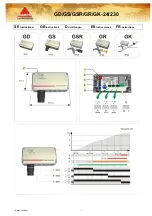9
TROUBLESHOOTING
The following troubleshooting steps may assist you in case you’re having prob-
lems with your Detector.
YOUR DETECTOR IS EMITTING ERRATIC SIGNALS WHEN YOU’RE IN THE FIELD.
Your
SENSITIVITY
may be set too high. Try reducing the
SENSITIVITY
slightly until
the false signals stop.
Remember to swing your coil slowly. Some inconsistent signals will occur on highly
rusted metals. If the signal does not repeat after successive passes of the coil over the
same area, then the target is usually not worthwhile.
Natural and man-made electromagnetic fields can cause interference.
YOUR DETECTOR IS NOT STABLE AND HAS A PULSING, DISTORTED TONE
INSTEAD OF A CLEAR TONE.
This can occur if you’re operating near another detector or near power lines that can
interfere with the detector’s operating frequency.
YOUR DETECTOR IS EMITTING A CONSTANT LOUD TONE OR
CONSTANT REPEATING TONES
This usually occurs when the batteries are low. Try replacing your batteries with
two new alkaline batteries.
KEEP 2 DETECTORS AT LEAST 20ft APART
If 2 detectors are in close proximity, interference between the two may cause your
detector to emit erratic signals.
PINPOINTING
Accurate pinpointing takes practice and is best accomplished by “X-ing” the sus-
pected target area.
●
1
Once a buried target is identified by a good
tone response, continue sweeping the coil over
the target in a narrowing side-to-side pattern.
●
2
Take visual note of the place on the ground
where the “beep” occurs as you move the coil
slowly from side to side.
●
3
Stop the coil directly over this spot on the
ground.
●
4
Now move the coil straight forward and
straight back towards you a couple of times.
●
5
Again make visual note of the spot on the ground at which the “beep” occurs.
●
6
If needed, “X” the target at different angles to “zero in” on the exact spot on
the ground at which the “beep” occurs.
IN THE FIELD TECHNIQUES


















